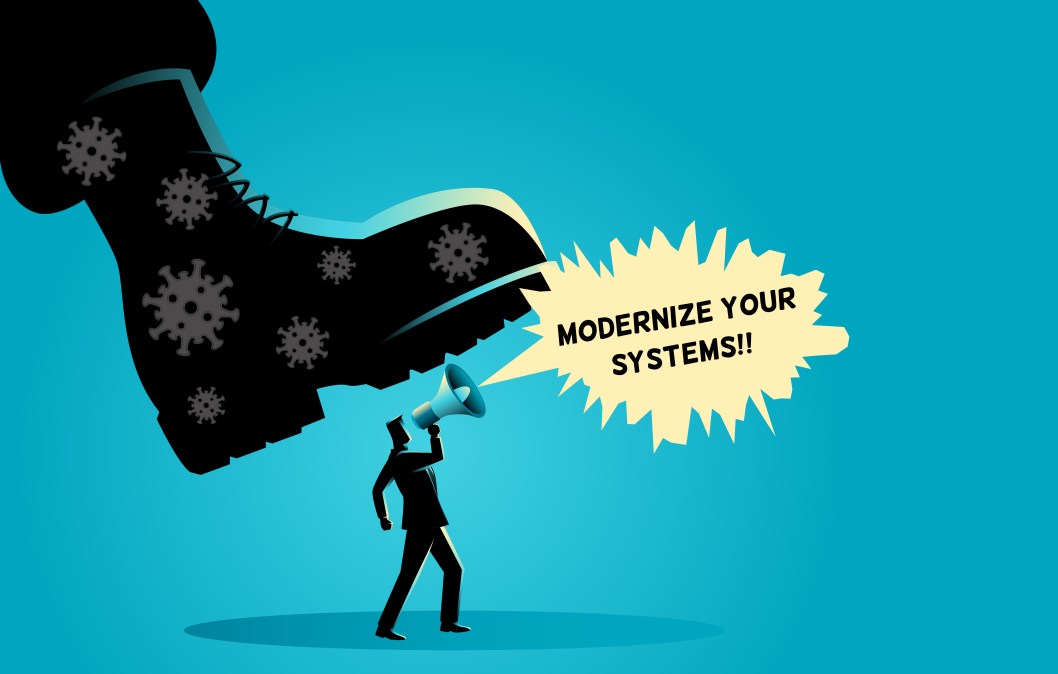The coronavirus pandemic could crush states’ digital transformation

The ongoing COVID-19 pandemic has upended how government works, forcing a sudden shift to widespread telework, an unprecedented demand on public-benefit programs like unemployment insurance and an almost universal cessation of in-person services, as the social-distancing practices meant to limit the spread of the novel coronavirus prevents people from going to government offices, and inspire little confidence about when normal society will begin to resume.
To some observers — and eager vendors — this quick and radical overhaul of government work presents a mixture of new security challenges, and an opportunity to accelerate projects.
“This is a sign government can no longer wait,” said Tomer Kagan, the chief executive of software company Merit, which is encouraging states to use its platform to digitize medical licenses so physicians can respond to coronavirus outbreaks in different states. “I think the demand on government to digitally transform is going to go up 100 times.”
The most recent nationwide survey of state-government chief information officers found that digital government had risen to the top of IT priorities, trailing only cybersecurity. Increasingly, the survey found, government agencies and citizens alike desire user-centric approaches to service delivery, transparent and open access to data and an increased willingness to experiment with transformative technologies. And for several years, many states have nudged toward making their governments more digital — retiring decades-old mainframes in favor of cloud servers, offering virtual replacements for driver’s licenses, implementing single sign-on procedures for access multiple services.
Some states, notably Connecticut, have even gone so far as to launch campaigns to build an “all-digital government.” But Kagan’s optimism may distance him from a more common and grimmer outlook foreseeing a long pandemic, followed by a post-crisis environment in which states — having had their budgets shredded due to the pandemic’s economic fallout — have to put their big, transformative IT projects on hold until tax revenues return to pre-coronavirus levels.
“You typically don’t anticipate there’s going to be 100 percent of your workforce that’s going to be teleworking for an extended period of time,” John Evans, a former Maryland chief information security officer, said in an interview last month. “In some ways there could be an opportunity to accelerate some of the digital transformation in government that have been in the background. As hard as it is, I see it at being an opportunity.”
A need for resiliency
Maryland has embarked on plenty of big digital transformation projects, like a migration of the systems that manage the state’s public benefits programs off old mainframes and on to a cloud-based environment, a process Evans helped implement when he was still with the state government. But the project, which will eventually encompass Maryland’s child welfare, juvenile justice, adult protective services, cash assistance and supplemental nutrition programs, isn’t slated for completion until 2021 at the earliest.
But the kind of transformation that the COVID-19 crisis is forcing upon states and cities is more about maintaining continuity of government operations at a time when it is medically unsafe for people to wait in lines at busy government offices.
Evans, now the chief technology adviser with IT services provider World Wide Technology, suggested some transformation could be achieved through the rapid expansion of cloud use and bulk purchasing of additional licenses for firewalls and other cybersecurity products so government workers, logging in from their homes, can still function in a secure environment.
“At a high-level, the strategic need is to support resiliency,” he said.
The need to maintain resiliency is also likely to dominate governments’ IT agendas as long as individual members of workforces are miles apart. Rather than big, ambitious projects, governments are more likely to spend spend on products that can facilitate remote work, like virtual private networks and video conferencing. And a crisis with no firm end in sight feeds uncertainty about how long IT officials will devote to ensuring their systems don’t break down, according to Shawn Taylor, a senior systems engineer at the cybersecurity company Forescout.
“I think there’s going to be this pendulum swinging toward the remote workforce, which will drive a lot of demand toward the [software-as-a-service] solutions like Office 365,” he said. “This is going to be a new construct for a lot of workers. People are used to coming into their cube, sitting down. There’s going to be a lot of introspection around the workforce and how they can still do their jobs without sitting next to people.”
‘Domino effects’
But the culture shift that will accompany widespread, open-ended telework will present CIOs with a new slew of problems, and could also deal a crippling blow to existing plans for big overhauls of how government uses technology, said Doug Robinson, the executive director of the National Association of State Chief Information Officers. While equipping workers with laptops and mobile devices, adding elastic cloud capacities and increasing the use of SaaS products fits CIOs’ roles as “brokers” of services in the moment, long-term projects may have to wait.
“I think there’s all kinds of unintended consequences and domino effects of what we’re going through,” Robinson said. “This may give more impetus to SaaS and cloud, but at the same time it’s going to slow down things for the foreseeable future because CIOs are going to have to step back to step up.”
Some of the public-sector tech issues raised by the health crisis have shown the consequences of not modernizing legacy systems sooner. Strains on unemployment systems that have forced some states to stagger when people can apply for benefits based on their last names or Social Security numbers, and, in the case of New Jersey, prompted a governor to put out an open call for technologists skilled in COBOL, the arcane programming language that undergirds the decades-old systems on which many benefits programs run.
“It’s shown that states don’t have the capital to make these major change,” Robinson said. “They haven’t moved to cloud environments to scale to meet the demand.”
These stopgap measures may have to suffice for the foreseeable future as states — and localities — anticipate that the tax revenue lost to economic shutdowns will force them to slim down their budgets drastically. New York Gov. Andrew Cuomo estimated last month that his state will lose at least $15 billion. On April 3, Washington Gov. Jay Inslee slashed nearly $450 million in spending over the state’s current budget and its next two-year budget.
“Under normal circumstances, I would not veto bills and budget items that are good policy and smart investments for the state,” Inslee said at the time. “As everyone knows, these are not normal times.”
These deep cuts will be felt in state IT departments, Robinson said, through the charge-back models typically used to finance their operations by billing customer agencies for projects and supplies, dealing blows to planned modernization efforts. “States are going to have to slow down things to a degree,” he said.

This story was featured in StateScoop Special Report: Digital Transformation (2020)





